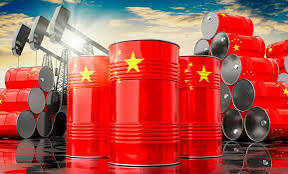What’s Behind the US-China Rare Earth Tensions?

Rare earth minerals have become the latest flashpoint in US-China trade tensions, with Beijing leveraging its near-total dominance over the sector to push back against American tariffs.
China currently mines around 70% of the world’s rare earths and processes 90%, holding sway over heavy rare earths like dysprosium and terbium, which are critical to sectors such as automotive manufacturing and defense.
Earlier this year, Beijing introduced export controls on seven rare earth elements, followed by restrictions on other niche metals like tungsten and bismuth, directly responding to US duties that peaked at 145%.
The controls triggered immediate supply issues, especially in the US and Europe, where automakers saw inventories dwindle and production timelines strained.
The standoff prompted a flurry of negotiations, culminating in a temporary deal that reduces US tariffs to 30% and Chinese duties to 10% for a 90-day window.
In April, China’s rare earth exports to the US fell by 37%, while rare earth magnet shipments dropped 58% to the US and 51% globally.
What Does This Mean for Me?
A partial rebound of 23% in May followed high-level talks in Geneva, though shipments remain below 2024 levels. While Trump claims the deal ensures upfront supply of magnets and rare earths, many of the details remain vague.
Western firms are still concerned about China’s power in the supply chain, particularly after reports that its commerce ministry requested sensitive business data from foreign companies in exchange for access.
As talks continue, rare earths remain at the crux. With tariffs still high and mutual trust lacking, the current framework looks more like a temporary cooling-off period than a long-term solution.
More News

The Rare Earths Boom Driving a New Global Supercycle
.webp)
Brent Rises as Fresh U.S. Sanctions Choke Russian Oil Exports

Global Wind Market Set to Hit $304 Billion by 2029
.webp)
Gold Cools After Record Surge as Dollar Strengthens

Nations Face a Decade-Long Effort to Impact China’s Rare Earth Monopoly

Silver Rockets to Record High as Investors Seek Safe Havens
.webp)
Gold Tops $4,000 as Investors Seek Safety from Macro Uncertainty
.webp)